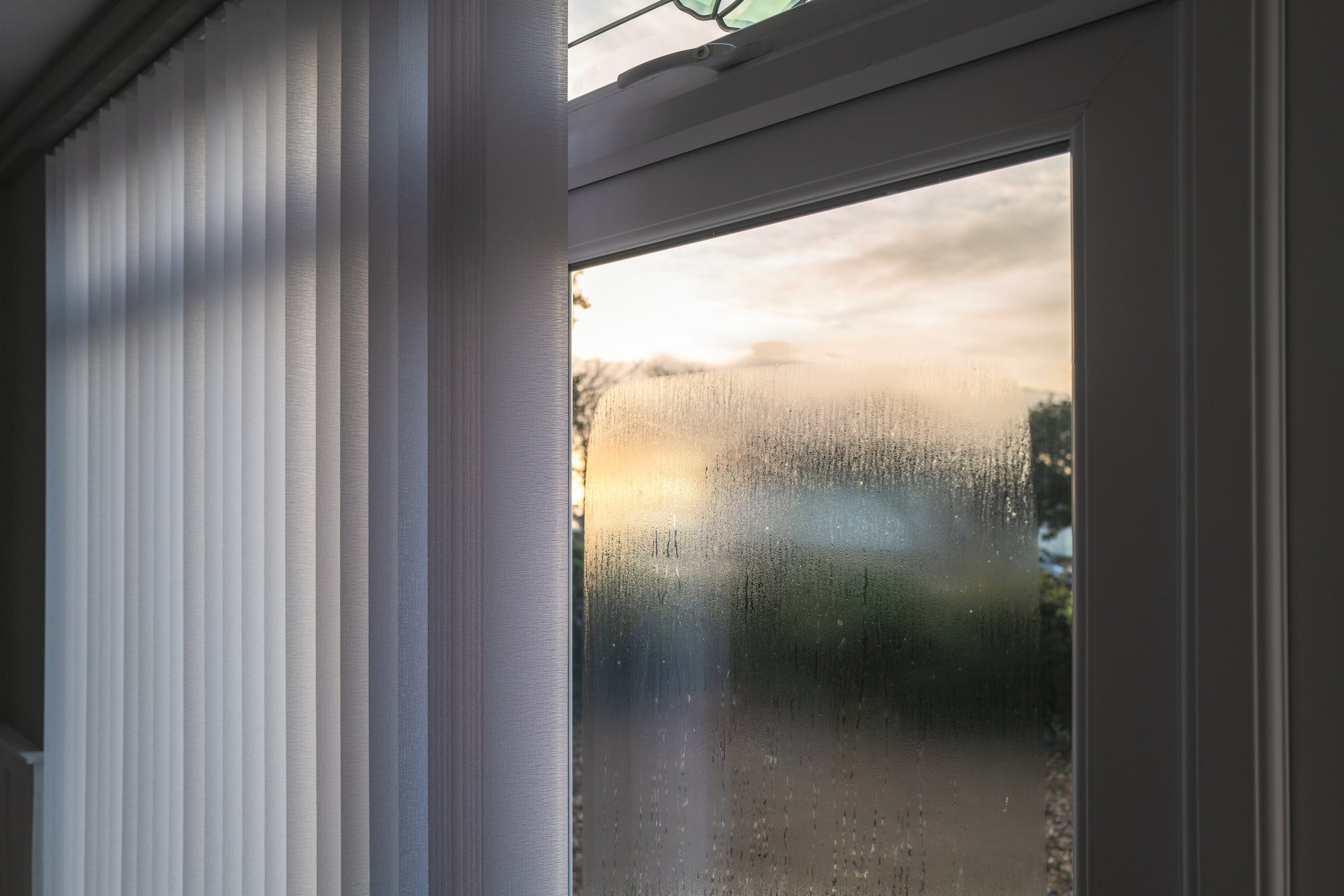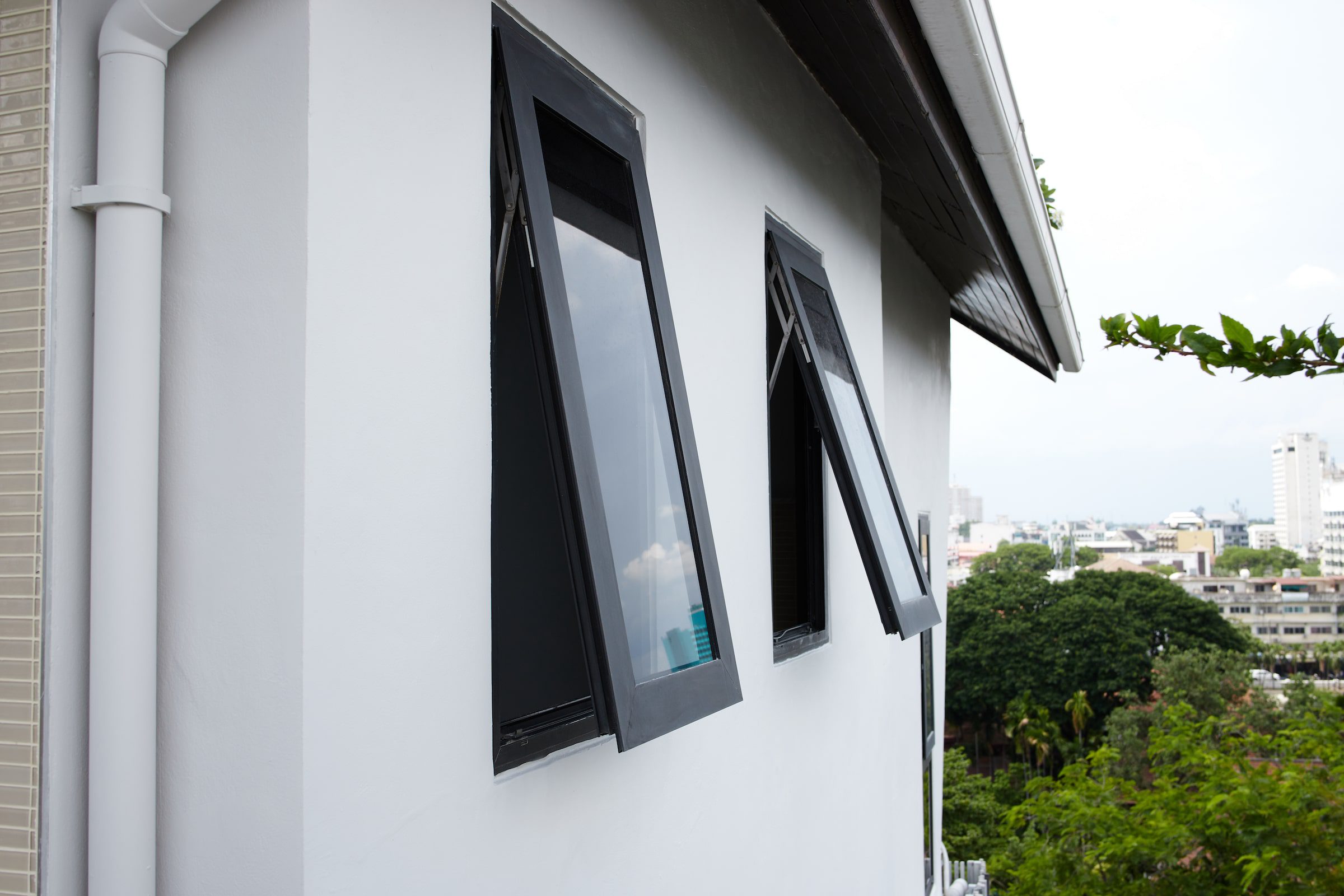New double or triple-glazed windows will improve the look of a property and provide better security, thermal performance and interior comfort. They should also help reduce condensation compared with the old single-glazed wood or metal windows, but you may see condensation on the outside of double glazing at certain times of the year.
Condensation on the outside of double glazing is nothing to be concerned about, as the new windows are doing an excellent job of preventing heat loss from inside the room. If you see condensation between the two panes of glass on the inside of the sealed unit and where you can’t touch the condensation, this indicates that your double-glazed unit needs replacement.
Here is what you need to know.
Condensation on the outside of double glazing means energy efficient windows

The double-glazed aluminium, PVCu or timber windows available today are more energy efficient than ever, so why does condensation outside of double-glazing occur? The truth is that some moisture or condensation is common on even the newest windows.
Whether it is thermally broken aluminium windows, multi-chamber PVCu, or the solid profiles of natural wood, the design of modern windows reduces heat loss and helps save money on energy bills. The insulated window frames work together with the excellent glass units having coatings and gasses and benefitting from the latest glass technology.
This energy efficiency is also part of the current Building Regulations. Window Energy Ratings and U-Values are set to improve, this is great news for getting the best new windows possible.
However, one consequence of modern window frames and high-specification glass is seeing condensation on the outside of double glazing. This happens because the outside temperature is warmer than the surface of the outer pane of glass. The low-emissivity coatings used and the additional pane of glass with triple glazing simply prevent the heat from inside from getting to the outside pane of glass. The outer pane never warms up and therefore gets condensation on the outside.
Whether new windows have a good C rating, a very good B Rating or an excellent A Rating, they are working normally, keeping the heat in the room and preventing the cold from getting in. Therefore, do not be concerned if you see condensation on the outside pane of your new windows. The windows are simply doing their job.
Seeing condensation between the panes of glass
If you see condensation between the two panes of glass on the inside of the sealed unit and where you can’t touch the condensation, this indicates that your double-glazed unit needs replacement.
In most cases, the hermetic seal that bonds the glass unit together has failed. It is therefore letting in air and moisture. It’s time to change the glass but not necessarily the window itself.
When you see condensation on the inside of your window
The presence of condensation inside double-glazed windows on the room side is also not a fault. Condensation on the inside of your windows is, in many cases, just a consequence of how we live and use our homes. Moisture from cooking, drying laundry inside, heating, cooking, showering and even moisture when breathing. All these factors can cause condensation inside the home.
Water vapour turns into a liquid and settles on the cold surface – in this case, the glass on windows. Condensation inside the room is never completely eliminated, even with the latest windows. You can do some things to reduce moisture in your rooms and condensation as a result.
Ensure a steady flow of fresh air into your room by leaving the trickle ventilators open if your windows have these fitted. Trickle vents are a very useful addition to your windows, so don’t be tempted to close these. These small and discreet ventilators in windows or doors are incredibly effective.
Ventilate your rooms as much as possible and avoid creating excess moisture, such as drying washing inside on the radiators or running the tumble dryer in a closed room. Leaving the internal doors open also helps circulate the air.
Ventilate bathrooms during or after bathing or showering and the kitchen when cooking. The causes of condensation are numerous, you can find out more about the causes of condensation inside the home from the Glass and Glazing federation .

Why you tend to see condensation on the outside of windows in the morning
Condensation on the outside of double glazing is really not that different to seeing moisture on surfaces at certain times of the year. You may see condensation on your car on seemingly dry nights or when only certain parts of your car are wet and others are dry. Moisture always adheres to the first cold surface it finds. Therefore, as the glass outside is colder, this is where it’ll settle and why you’re seeing it.
The condensation may be visible in the centre of the window panes or in other areas. It tends to be less visible on the glass edges where it meets the insulated window frame.
As soon as the external temperature increases, you will see the moisture evaporate and leave a clear pane of glass.
New windows never completely eliminate condensation
It’s a common belief that new windows will solve condensation issues on old windows. There is no doubt that replacing old windows with single glass and frames that are not insulated will be better when you fit the latest generation of new windows. However, do be sceptical of any salesperson telling you that condensation on windows will be a thing of the past.
As we’ve explained, there are numerous factors causing moisture to appear on windows, and this is not the fault of the window itself. Modern windows’ technology and design will help improve your rooms, but no new window will completely eliminate condensation.
Condensation on the outside of double glazing is not a problem
Condensation on the outside of your new windows is, therefore, normal, a naturally occurring process and is happening because modern window frames and glass are so good at preventing heat loss from your home. Whilst any obstruction to your view, like condensation on the outside, can be frustrating to look at, it is nothing to worry about. But do take steps to reduce the moisture levels inside your room.
If you still any concerns about condensation and windows, we will be happy to help to answer you questions.











